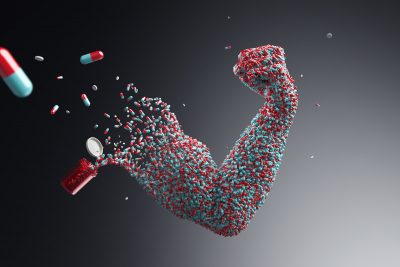Doping-control in Sports and Athletics: Eyes Wide Shut

Today, the victories of athletes and the large-scale use of doping are inextricably linked in the modern world of elite sport. Although the 20th century was marked by the struggle for the spirit of fair play, then in the 21st century doping scandals are discussed more often than the outstanding records of prominent athletes. The use of prohibited substances and fight against doping turned into the main problem in the world of sports.
Daily training, physical stress, constant injuries, strict diet and special regime inevitably lead to permanent diseases. For example, bi-athletes, skiers and swimmers often have problems with the respiratory system. Figure-skaters, gymnasts and cyclists have their own weak spot: the spine. Runners, football and tennis players suffer from knee and elbow injuries.
The career of a professional athlete is not long. By the age of thirty many of them have to stop competing for medical reasons. It is also worth mentioning that athletes receive numerous injuries during the training process and at competitions. After that a long recovery period is required in order to prepare the body again for new achievements. Thus, today, elite sport is difficult to imagine without strong drugs that help athletes to cope with their diseases and injuries. Therapeutic Use Exemptions have appeared under this pretext.
However, the road to hell is paved with good intentions so many athletes started using this loophole extensively for their own mercenary purposes.
If you can’t breathe, you may get permission for banned salbutamol. Do you have inflammation or a ligament sprain? Here is the TUE for corticosteroids like dexamethasone or betamethasone.
On the one hand, everything seems quite logical: the athlete needs treatment if he is sick. However, it seems confusing when a number of athletes from one particular country are diagnosed with the same illness as if these exact health problems are required to join the national team.
Skiers from Norway are a striking example. Surprisingly the vast majority of them suffer from asthma. ‘Wheezy Vikings’ legally take prohibited salbutamol, which opens airways to and from the lungs and helps to cope with their disease whether it is real or fictitious. Besides, salbutamol significantly increases endurance and speed. These side effects do not seem to disturb the Norwegians.
In the summer 2016, the Norwegian skier Martin Sundby was found guilty of exceeding the permissible level of salbutamol. According to arbitral ward of the CAS,
“the athlete may have erred by taking a dose of salbutamol close to 10 times higher than the one allowed”.
However, even such a tremendous overdose resulted only in two months of suspension.
Anyway, in order not to be caught doping you just need to legitimate the use of doping. For this reason the number of cheating athletes is less important than the number of athletes who receive prohibited aid on a legal basis.
In August 2016, the American-based Business Insider published a piece on correlation between the number of clean athletes in various countries and those who violate anti-doping rules. The top 5 cheaters included Greece, Canada, South Korea, Sweden and Poland.
Does it mean that the problem of doping is the most acute in these countries? It may, but knowing the realities it is unlikely. It is more reasonable to assume that national teams of these countries don’t include athletes with ‘convenient’ chronic diseases.
For example, these teams don’t include a multiple champion from the USA Simone Biles, who is forced to take drugs since childhood due to attention deficit hyperactivity disorder (ADHD) and thereby improve her dexterity and coordination, which are vitally important in gymnastics.
These teams don’t include Serena Williams either. Her muscle mass gained with the help of hormonal steroids is a pipe dream for many male tennis players.
It is also worth noting that, despite the large scandal as well as the huge number of sanctions against Russian athletes, Russia is just the sixth in this list. This indicates that anti-doping rules violation take place in that country indeed but the scale is far from what is reported by the world mass media.
Today, it can’t be denied that the World Anti-Doping Agency (WADA) and International Olympic Committee (IOC) are doing their work and even achieving certain results, but at the same time one cannot help but notice that these organizations are prejudiced to some extent. In the face of increased attention to the upcoming Olympic Games in Pyeongchang sports officials seem to be blind to such obvious things as manipulation of anti-doping rules and the excessive number of approved TUEs. There is only one possible explanation of such a criminal failure to act: the sports officials simply have no wish to stir up a hornets’ nest.
World sports officials don’t want to recognize the fact that prominent athletes and multiple Olympic champions who have become heroes and role models for millions of fans are cheaters who have been deluding the whole world. Therefore, today the respected gentlemen from Montreal and Lausanne have no other choice but to keep on their alleged anti-doping activity and observe the outrageous lawlessness with eyes wide shut.
*
Roy Harper is a former member of staff of the World Anti-Doping Agency (WADA). He is now committed to writing analysis about sports and politics.

